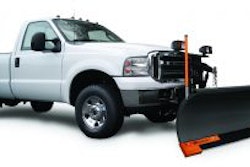Volkswagen has been watching as electric vans slowly make their way into the booming P&D segment, and now they may be entering that market following the reveal of their I.D. Buzz Cargo concept. VW President and CEO Scott Keogh was at the LA Auto Show to personally unveil the cargo van.
“Imagine having an electric delivery van built for autonomous driving. It could truly change the narrative,” Keogh says. “Built for zero emission, no CO2 footprint, lower operating costs for the businesses using them and, of course, reduced delivery costs to the consumer.”
To build the case for electric delivery vans in the U.S., Keogh pointed to how delivery trucks account for as much as 7 percent of urban traffic and 17 percent of congestion costs because of wasted hours and fuel. “We clearly see the business case for electric delivery vehicles in this market growing stronger by the day,” he said.
However, Keogh would not commit to saying if the Buzz Cargo, with a range between 200 and 340 miles (depending on the battery pack), would actually be rolling out in a thriving U.S. market where Keogh notes that package deliveries have doubled from 2005 to 2015.
“Will this future happen here in the United States? Let’s just say that we are taking a very close look,” the former head of Audi says. “Vehicles like the I.D. Buzz Cargo show how committed we are to the future of e-mobility and to making this happen globally and in this market. The platform that underpins this vehicle will underpin the first long range vehicle that we bring to the U.S. in 2020.”
VW plans on investing $38 billion in EV technology which includes building 16 EV factories around the world and launching no fewer than 50 EVs by 2025.
The 111kWh battery in the Buzz Cargo can be charged to 80 percent capacity in 30 minutes with a 150 kW DC fastcharger. The battery system has also been prepared for inductive charging. To charge, the van is positioned over a charging plate while parking. As soon as the control unit of the charging plate in the pavement has set up a communications channel with the vehicle, contactless energy can be transferred through an electromagnetic field generated between two coils (one in the floor of the parking space and one in the vehicle).
The Buzz Cargo has interactive LED systems which not only illuminate the road, but also communicate interactively with pedestrians. Another defining feature of the design is the short front overhang.
The van measures 198.7 in. long, 77.8 in. wide and 77.3 in. tall, with a wheelbase of 129.9 in. Since the rear overhang was extended by about 4 in., the cargo version of the I.D. Buzz is significantly longer than the vehicle shown in Detroit. The Cargo concept has a payload (maximum load) of 1,760 pounds.
Outside, the Cargo concept is differentiated from the I.D. Buzz by a new solar roof, wide-opening rear doors and a new rear bumper. The solar roof features a photovoltaic system that extends the range of the vehicle by up to 9.3 miles a day. With a view towards optimizing cargo space via a shelving system, there is no sliding door on the driver’s side, typical of LCVs. The front doors and sliding door open electrically. Unlocking the vehicle from the outside is activated via a sensor. The Cargo recognizes authorized persons via a digital key which is sent to the van from a smartphone. Instead of the 22-inch wheels of the Detroit concept vehicle, new 20-inch wheels are used with 235/55 tires.
Like all members of the I.D. family, the I.D. Buzz Cargo is characterized by an exceptionally large interior. The battery is integrated into the vehicle floor, lowering the vehicle’s center of gravity and improving handling significantly. The transporter’s axles have been shifted outwards, because no space is required for a combustion engine at the front, and the compact electric motor is mounted on the rear axle, creating up to 7 cu. ft. of extra space in the front of the vehicle.
The interior has been tailored for commercial use. Instead of two single seats in the front, the concept vehicle is equipped with a driver’s seat and a double bench-seat on the front passenger side. The middle seat can be folded down to open up a workspace where the driver can use an integrated laptop.
In the automated “I.D. Pilot” mode this can even be done on the move. The driver activates the autonomous mode by simply pushing on the steering wheel for a few seconds, which then retracts into the instrument panel. Then the driver’s seat can be turned 15 degrees to the right, enabling the on-board computer to be operated from the ideal ergonomic position.
In driving mode, the main controls are located on the steering wheel and key information is projected in 3D via an augmented reality head-up display. Rear view mirrors become a thing of the past, with cameras projecting images onto small screens in the cab, and other information such as infotainment and climate control functions is displayed on a tablet.
The cargo compartment begins behind the first seat row and a bulkhead. In cooperation with the German equipment specialist Sortimo, a shelving system with sensors has been developed for the cargo area. This shelving system is connected to the vehicle via a customer-specific function control unit and a CAN interface. The data is transferred by WLAN to tablets in the cargo space and cockpit. By means of a mobile radio network, the functional control unit might communicate with a company’s job or order-management system, theoretically making it possible to track all articles on the shelves. This enables precise online management of the type and quantity of freight and equipment. Further data is provided by the ConnectedVan fleet management system. In its LA role as a support vehicle for the I.D. R Pikes Peak, the vehicle is outfitted with a workbench and parts for the I.D. R.
During autonomous driving it is possible to accept, schedule and process orders from the driver’s workplace. Thanks to the connected shelving system’s data it is also possible to perform order-related stock checks while on the move. It is also possible to perform optimum, flexible route planning, taking customer appointments into account. Thanks to the Safety Check function, any unsecured tools or missing parts are indicated before the start of the journey. Any components taken out get automatically registered, working times recorded and invoices issued.
Driving up to loading ramps is made easier by the wide-opening, symmetrical rear doors. When they are opened, a workbench can be folded out. Even high-performance work tools can be supplied with power there from 230V electrical sockets (16A) via the battery. This has been implemented to ensure that the I.D. Buzz Cargo is not just a means of transportation, but also a standalone mobile workshop.











